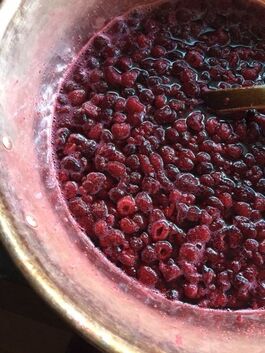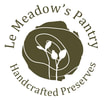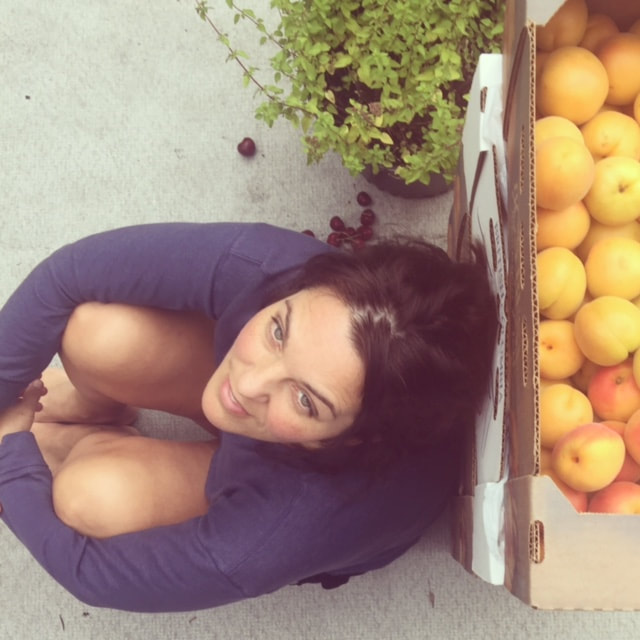|
Late Spring Chronicles A Bumper Crop of Rhubarb The recent spring rains and cooler temperatures have created the ideal conditions for rhubarb this year. We've spent countless hours chopping, cooking, and preserving rhubarb in a variety of flavors. We are delighted to announce that our shelves are stocked with enough rhubarb jam to last well into the winter months. Frost Damage in British Columbia We also have some unfortunate news. This past January, the Okanagan Valley experienced an extreme cold snap, with temperatures dropping to -29°C. This sudden freeze significantly impacted fruit buds, especially on peach trees. As a result, we will see a limited harvest of local cherries, apricots, peaches, nectarines, and some plum and apple varieties this summer. The pear trees appear to have weathered the cold better, and we should have a good supply of local pears. Supporting Our Community You may have noticed apricots, peaches, and cherries in supermarkets around town. These fruits are sourced from California, where the climate spared them from such severe cold. After much consideration, we’ve decided not to use these fruits to make our beloved summer preserves. While we normally prioritize using sun-ripened fresh fruit for its peak sweetness and aroma, supporting our local farming community is also a top priority. Due to this year's challenging harvest in the Okanagan Valley, we've sourced some certified organic frozen stone fruit – sugar plums, apricots, and cherries – from the Similkameen Valley for our preserves. What to Expect While using frozen stone fruit is a new approach for us, we are committed to maintaining the high quality and delightful taste you expect from our products. You might notice a slight difference in the color and texture of our preserves. Frozen fruit tends to break down more during cooking, resulting in a smoother consistency and perhaps a less vibrant hue. However, rest assured that the flavor will remain as delicious as ever. We appreciate your understanding and continued support as we navigate these challenges. Your loyalty helps us support local farmers and our small artisan preserving company. Upcoming Preserves We are excited to announce that our first plum and apricot preserves will start being available in early July. From then until the end of September, you can expect a variety of flavors to be released. We look forward to sharing these new creations with you and hope they bring a taste of summer to your table. New Honey-Sweetened Jams We've heard your requests for more honey-sweetened jams, and we're excited to announce new additions to our lineup. Our red currant and strawberry jam with lemon balm, gently sweetened with honey, is now available. Look forward to a plum jam sweetened with honey coming soon. Featuring a lower sugar content and a pleasant tartness, these jams offer a delightful balance of flavors. Where to find me this summer: This summer, you can find me at three different farmers markets. I'll be alternating between the West End Market and Trout Lake Market on Saturdays, and on Sundays, I'll be at the Kitsilano Market. For a detailed schedule, please check herehttps://www.lemeadowspantry.com/farmers-markets.html. I hope to see you at a market this summer!
0 Comments
In 2023 Le Meadow's Pantry celebrated its 10th anniversary quitely in our yellow kitchen, gently simmering fruit.
In 2023, we proudly supported local farmers by purchasing over 40000 lbs of fruit, including apples, black currant, blueberries, raspberries, plums, peaches and more beautiful fruit. In 2023 we attended over 75 farmers markets in Vancouver, BC, feeding our community and strengthening our local economy. Preserving so many fruits was made possible by my hardworking and dedicated team: Miki, Regina, Karen,Oshen, Trevro, Tanya and Rosalie +my friends and family. In 2024, we will continue making our French style preserves with the same dedication-completely by hand and cooked in incredibly small batches bringing love and sweeteness to your home. Thank you for the following this year and all your wonderful messages.  Little Bird’s Nest Cookies Posted on January 15, 2015 Life is always a little sweeter when you’re baking cookies. These beauties have a rich buttery texture and are simple to make. They are all about the butter, use a high quality butter and your favourite jam. 1/2 cup (1 stick) unsalted butter, softened 1/3 cup pure cane sugar 1 egg yolk, lightly beaten 1 teaspoon pure vanilla extract 1 1/4 cups four, ( I used a gluten free mixed and it worked perfectly) pinch of salt Your favourite Le Meadow's Pantry jam or marmalade for filling 1- Preheat oven to 325 degree. Beat together butter and sugar with an electric mixer until fluffy, about 3 minutes. Add egg yolk and vanilla and mix well. 2- Add flour and salt, and mix until just combined. Refrigerate dough for 2 hours. 3- Roll dough into 1-inch balls and space 1 inch apart on baking sheets lined with parchment paper. 4- Press down center of each ball with your thumb. Bake for 10 minutes. Remove from oven; press down center again. Return to oven and bake until golden brown, about 10 minutes. 5- Let cool slightly on sheets. Fill each center with jam. Recipe adapted from Martha Stewart Holiday Cookies Grand-Maman Irène’s upside down rhubarb cake We harvested the first rhubarb in our garden and made our first batches of rhubarb jam and a cake. This is the cake my beloved grand-maman Irène used to make every spring with the first rhubarb from her garden. They also grew red and black current and gooseberries to make delicious jellies. The jars were kept sealed and served on cold days to brighten up the long winter back east I use a well-seasoned cast-iron pan skillet but a cake pan would work too. For topping: 4 tablespoons unsalted butter 1/2 cup packed brown sugar 1 1/2 pounds rhubarb stalk, trimmed and cut into 1 inch pieces ~about 3 cups For cake: 1 1/2 cups unbleached flour 1 1/2 teaspoons baking powder 1 teaspoon baking soda 1/2 teaspoon salt 1/2 teaspoon ground cinnamon 8 tablespoons unsalted butter, room temperature 2/3 cup brown sugar 1 teaspoon vanilla extract 1 teaspoon almond extract 2 large eggs 3/4 cup whole milk Preheat oven at 350 F Make the topping: Heat butter in skillet gently until foam subsides. Reduce heat to low and sprinkle sugar and cook without stirring for 3 minutes. Remove skillet from heat and place rhubarb in one layer on sugar mixture. Set aside. Make the cake: 1.In a large bowl mix all the dry ingredients. 2.Beat together butter and sugar in a large bowl with an electric mixer at high speed, about 1 minute. 3.Add vanilla and almond extract to the sugar and butter and add eggs one at a time, beating well after each addition. 4.Reduce speed and add flour mixture alternately in batches with milk, beginning and ending with flour mixture. 5.Mix until just combined Bake the cake: 1.Spoon cake batter over the rhubarb without disturbing the rhubarb. 2.Bake cake until golden and a wooden skewer inserted in center comes out clean, 40 to 45 minutes. 3.Cool in skillet on a rack for 15 minutes. 4.Run a thin knife around edge of skillet. Wearing oven mitts, invert a plate over skillet and, keeping plate and skillet firmly pressed together, invert cake onto plate. 5.Carefully lift skillet off cake. 6.Serve cake warm or at room temperature. We have had a week of amazing sunshine. To celebrate, dandelion flowers have put on their best colours and are gleaming under clear sky. Dandelion jelly or cramaillote originated in France. Each spring, thousands of dandelions are turned into a golden jelly and are sold at farmer’s market around the country. Dandelion jelly has a rich amber colour with a pleasant taste reminiscent of honey. We don’t need to add any additional flavour to complement the cramaillote, dandelion flowers bring enough character and depth on their own. Dandelion jelly is delicious on a thick slice of rustic potato bread with fresh butter. It also pairs well with goat’s cheeses, soft or hard. While gathering our sun hats and wicker basket to harvest the dandelion flowers, we shall not forget to bring a bottle of freshly made soda with a handcrafted fruit syrup. Orange and Mint Soda Here’s my favourite recipe to a perfect picnic. Orange and Mint Syrup 3-4 large oranges ~ I used Cara Cara, Blood orange or Mandarin would be delicious 2 cups cane sugar 2 cups water 4 tablespoons lemon juice ~ I used 3 tablespoons Meyer lemon and 1 tablespoon lemon 3 sprigs fresh mint Directions: 1. Scrub and zest the oranges. Juice them to equal 2 cups juice. Remove any seeds. 2. In a non reactive large saucepan, place the orange zest and their juice, sugar, water, and lemon juice. Bring to a boil over medium-high heat, reduce the heat, cover, and cook for 20 minutes. 3. Remove from the heat, add mint and infuse for 2 hours. 4. Pour the mixture through a sieve, jelly bag or double layers of cheesecloth into a mixing bowl. (An old t-shirt also works well) 5. Pour the mixture into a jar or bottle and let cool.Keeps in airtight container in the fridge for 10 days and 6 months in the freezer. To use: Two tablespoons mixed in a large glass of bubbly water, chilled or over ice. The Meyer lemon is famous for its juicy, lovely sweet orange-lemon flavourful pulp and incomparable perfume. Rounder than conventional lemon, it has a smooth, thin yellow rind that deepens to orange-yellow as it ripens and it is almost seedless. Preserving Meyer Lemons in Salt Ingredients:
Interesting facts about Meyer Lemon: The fruits expert David Karp tells us that the Meyer lemon (C.x meyeri) was introduced to the United States by another plant explorer, Frank Meyer who discovered the tree growing in pots near Peking in 1908. At that time, lemons were indigenous to India and exotic and scarce in China. Recently a researcher at the University of California at Riverside have determined that the Meyer lemon is a hybrid and that its female parent is almost certainly a sweet orange, and the male a lemon or citron. Every part of the lemon can be use in cuisine. The fragrant skin contains valuable oils that add flavours to drinks, and every kind of dessert. A meyer lemon is different from a regular lemon. If you are using a Meyer lemon you will use it first for it’s perfume, sweetness and subtlety of it. Yet, when you taste it, you may want to add a touch of regular lemon to give it a little more depth. The Meyer lemon’s complex, almost floral flavour and aroma combine happily with grapefruit, honey, lemon, lime, orange, vanilla, thyme, bay leaf and mint. Meyer lemons are usually grown in California but are becoming more widely available. They are perishable and are not in the market for long during the winter months. The beauty of preserving Meyer lemons is that it gives you a way to enjoy them year-round. Preserved lemons are common in Moroccan dishes but their complex, bright flavour and aroma enliven all kinds of soups, stews, salads and drinks. Rhubarb compote is one of the great classics. When the rhubarb is cook long enough to soften, but not too long to turn into purée, the flavours blend harmoniously while the natural acidity of the fruit fades away. The compote should have some pieces left with a dark pink hue.To make the compote you will need:
Dishes where you can use Rhubarb Compote Ricotta cheesecake with rhubarb compote With a spoon straight from the jar Vanilla yogurt , honey and rhubarb compote Apple and rhubarb compote crisp Rhubarb, strawberry and mint cobbler. Rhubarb compote, caramel and walnuts Rhubarb compote and crème fraîche The scarlet rhubarb with its large wavy-edged leaves is a vegetable, though it is usually eaten as a fruit. Wild rhubarb is native to Asia and rhubarb root has remained a prized medicinal herb for thousands of years. Rhubarb is one of the first vegetables to sprout in the spring bringing the traditional rhubarb pie, but it was not until the early 1800s that rhubarb recipes began to appear in cookbooks. Only the stalks are eaten. The leaves have been associated with cases of poisoning due to their high concentration of oxalic acid, and must not be eaten. |
AuthorGeneviève marmalade and jam maker at Le Meadow's Pantry, Vancouver BC Archives
June 2024
Categories |
Copyright © 2024




 RSS Feed
RSS Feed